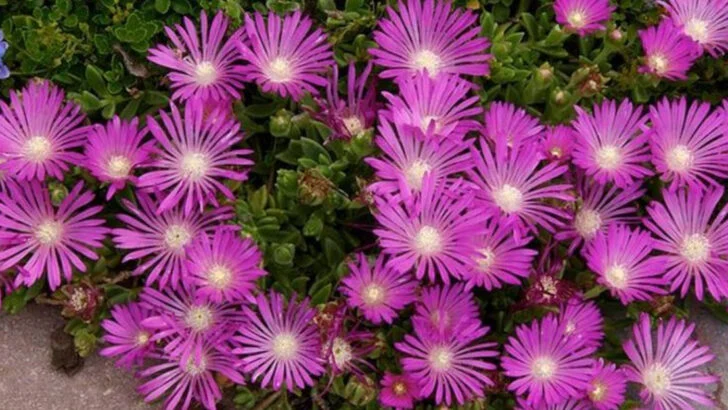Finding the right plants for shady spots in the yard can feel like trying to fit a square peg in a round hole. Full-sun plants get all the attention, but shaded areas, under trees, along fences, or beside buildings, need love too. That’s where low-growing ground covers come in handy: they soften the space, crowd out weeds, and add color or texture without needing much fuss. And some of them genuinely thrive in the shadows.
This list brings together 15 reliable ground covers that grow well in the shade, from creeping evergreens to shade-tolerant perennials. And because not every corner of the garden stays dark all day, it also includes 5 great options that prefer a bit of sunshine. No frills or hype, just solid plants that work hard, spread well, and look good doing it.
Lilyturf (Liriope muscari)
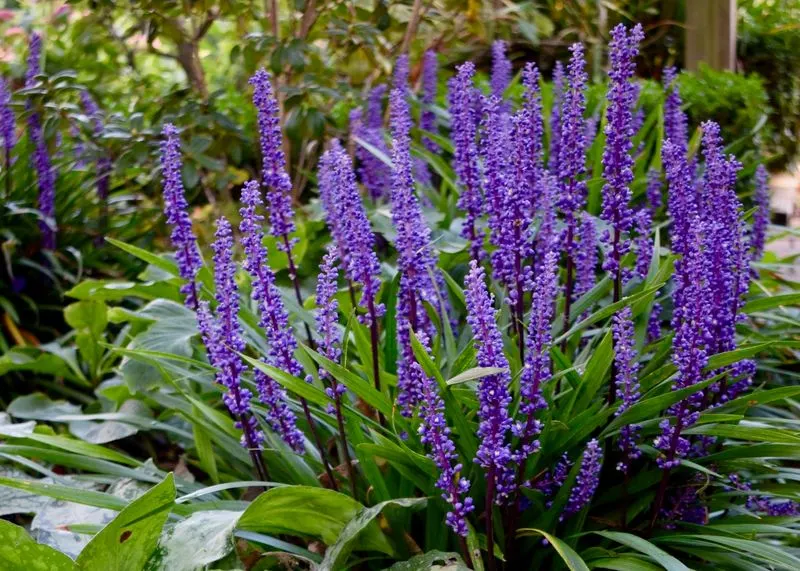
Lilyturf, or Liriope muscari, thrives in shady corners. Its dense, grass-like foliage makes it a favorite for landscapers. Delicate purple flower spikes add a pop of color during autumn, creating a captivating visual contrast.
Perfect for defining garden borders, Lilyturf is low-maintenance. It tolerates a variety of soil conditions, making it versatile. Whether planted en masse or individually, its adaptability is remarkable.
Originating from East Asia, Lilyturf is both ornamental and functional, offering beauty and utility. Its ability to suppress weeds under trees is particularly noteworthy.
Ajuga (Ajuga reptans)
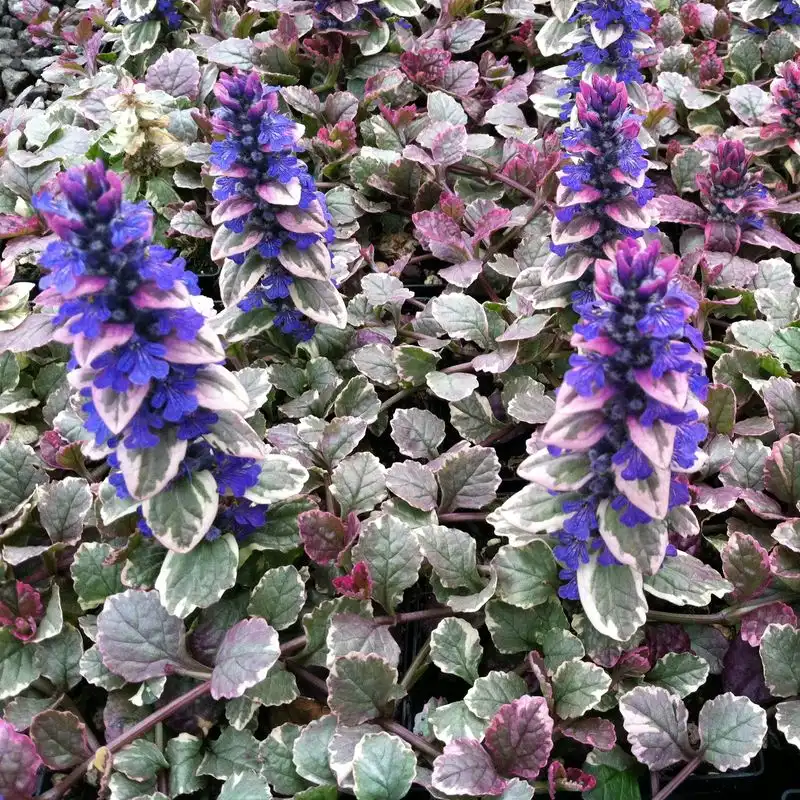
Ajuga reptans, often called Bugleweed, is a vigorous ground cover known for its rapid spread. Its striking blue flowers rise above glossy leaves, creating a stunning tapestry.
Ideal for shady paths, it suppresses weeds effectively. This hardy plant withstands foot traffic, making it suitable for garden paths or slopes. Its variety of leaf colors, including burgundy and bronze, adds to its appeal.
Native to Europe, Ajuga is a perennial favorite among gardeners. Its resilience and colorful display make it a versatile choice for challenging garden spots.
Sweet Woodruff (Galium odoratum)
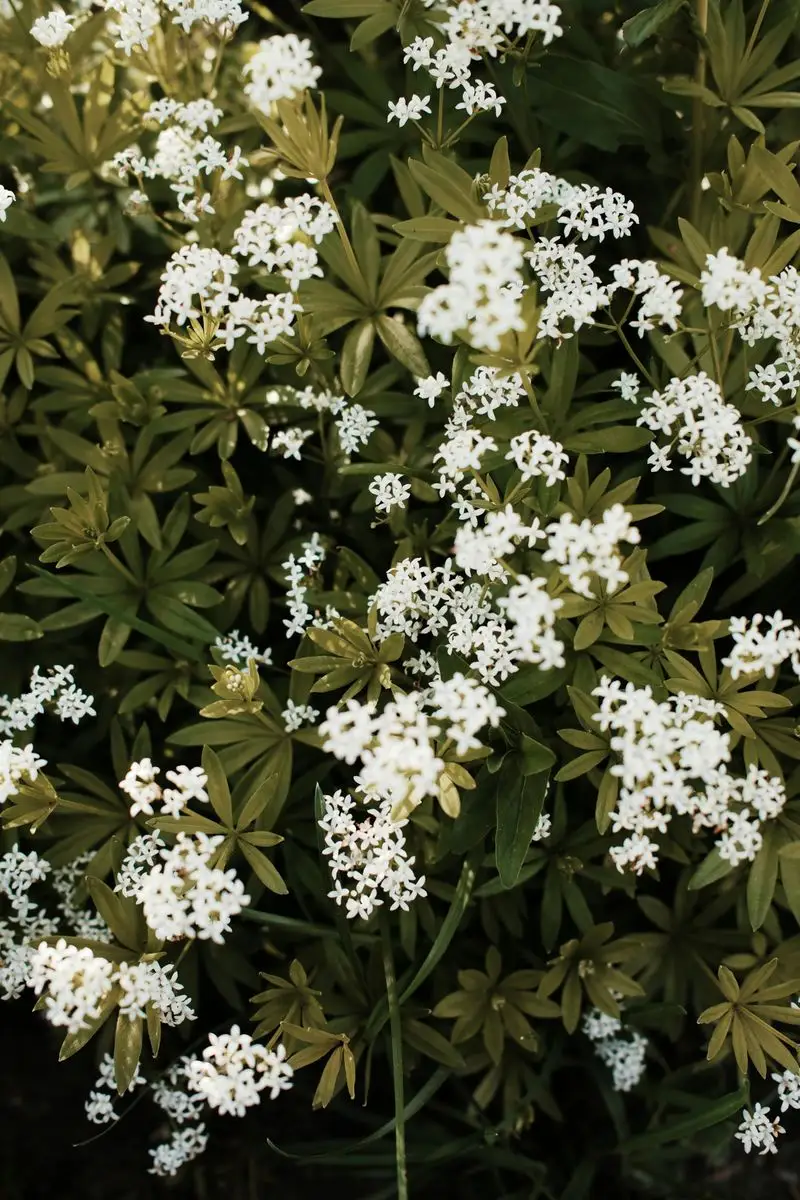
Sweet Woodruff, or Galium odoratum, enchants with its sweet fragrance and verdant foliage. Tiny white flowers bloom in spring, offering a gentle charm to shaded gardens.
A natural choice for woodland areas, it spreads gently, creating a carpet-like effect under trees. Its sweet scent is reminiscent of fresh hay, adding sensory pleasure to its visual beauty.
Historically used in traditional medicine, Sweet Woodruff is also known for its decorative qualities. Its ease of growth and pleasant aroma make it a delightful addition to any shaded space.
Hosta (Hosta spp.)
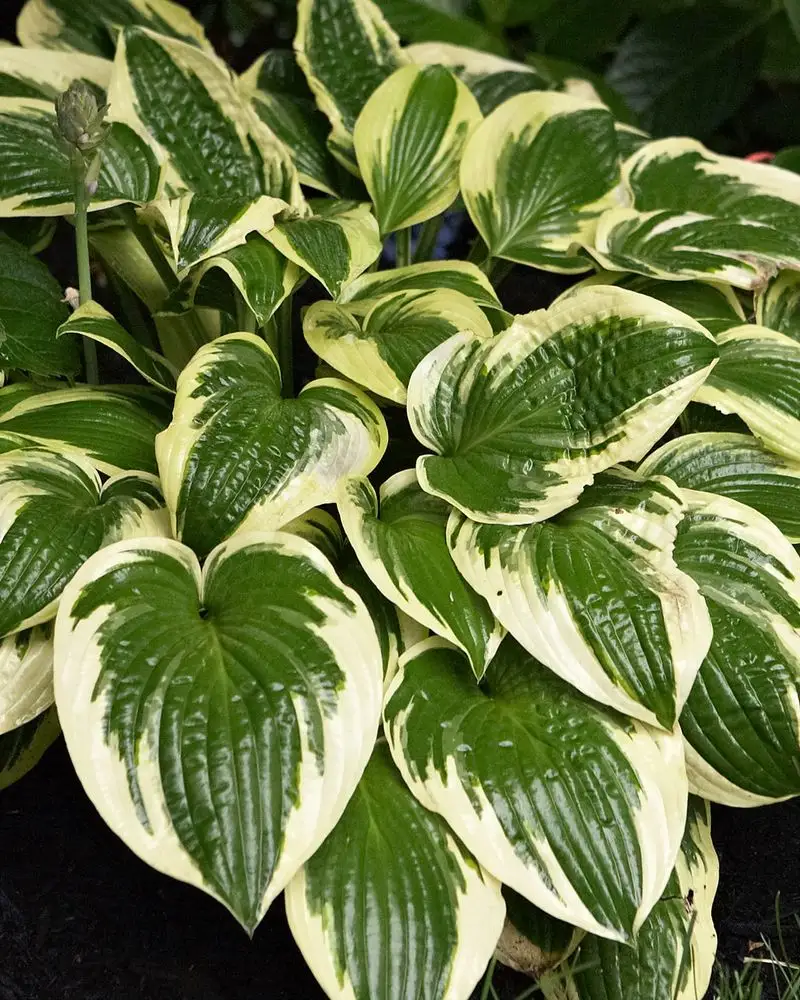
Hostas, beloved for their lush foliage, are a staple in shaded gardens. Their large, often variegated leaves create a dramatic visual impact.
Thriving in partial to full shade, Hostas come in numerous varieties with different leaf colors and sizes. They add texture and form to any garden space.
Originating from Northeast Asia, Hostas are more than just beautiful. They are hardy and adaptable, often outliving other plants. Their resilience and beauty make them a cherished choice for gardeners worldwide.
Japanese Pachysandra (Pachysandra terminalis)
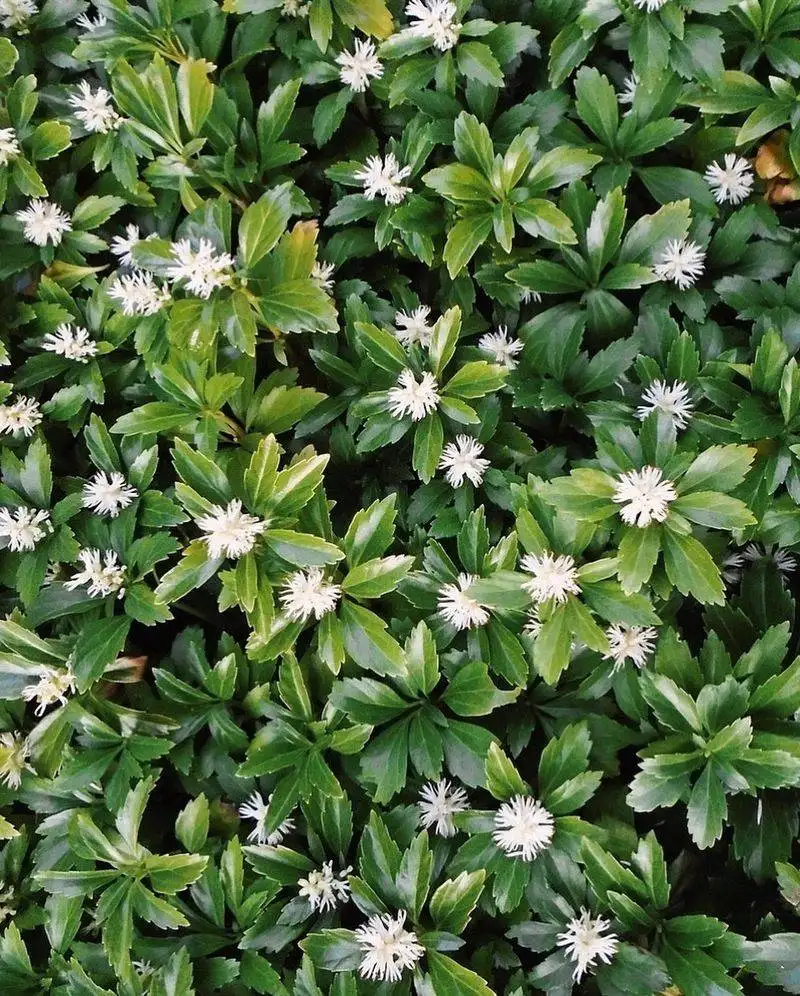
Japanese Pachysandra is a robust ground cover, perfect for shaded areas. Its glossy, evergreen leaves create a dense cover, maintaining its appeal year-round.
Small white flowers bloom in early spring, offering a subtle touch of elegance. Its ability to thrive in poor soil conditions makes it an ideal choice for challenging garden spots.
Native to Japan, this perennial ground cover is prized for its low-maintenance nature. Its consistent greenery and adaptability make it an effective solution for under trees and along shaded pathways.
Heuchera (Heuchera spp.)
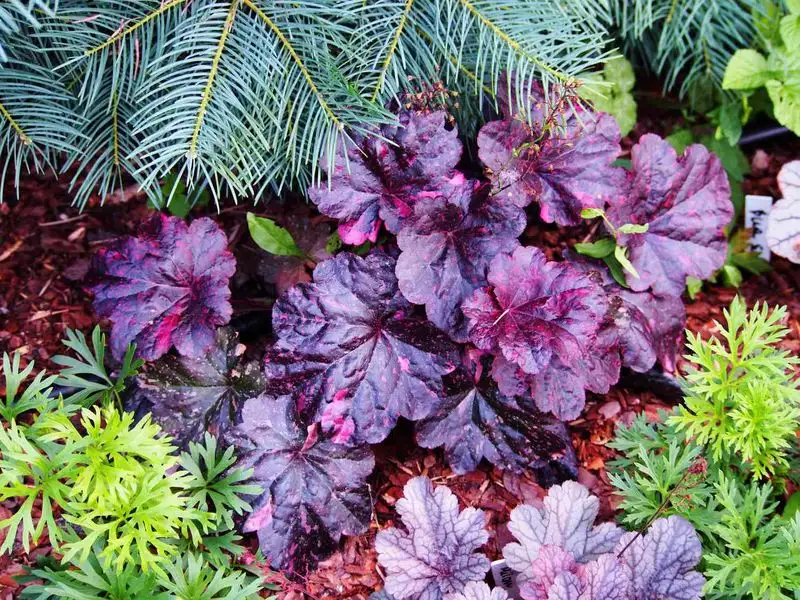
Heuchera, commonly known as Coral Bells, captivates with its vibrant foliage. Ranging from green to deep red, its leaves add color and interest to shaded gardens.
With bell-shaped flowers perched on slender stems, Heuchera adds a delicate touch to any landscape. It thrives in partial shade, enjoying both cool and warm climates.
A native of North America, Heuchera is loved for its decorative leaves. The plant’s versatility and striking appearance make it a must-have for those seeking visual interest without high maintenance.
Bishop’s Weed (Aegopodium podagraria)
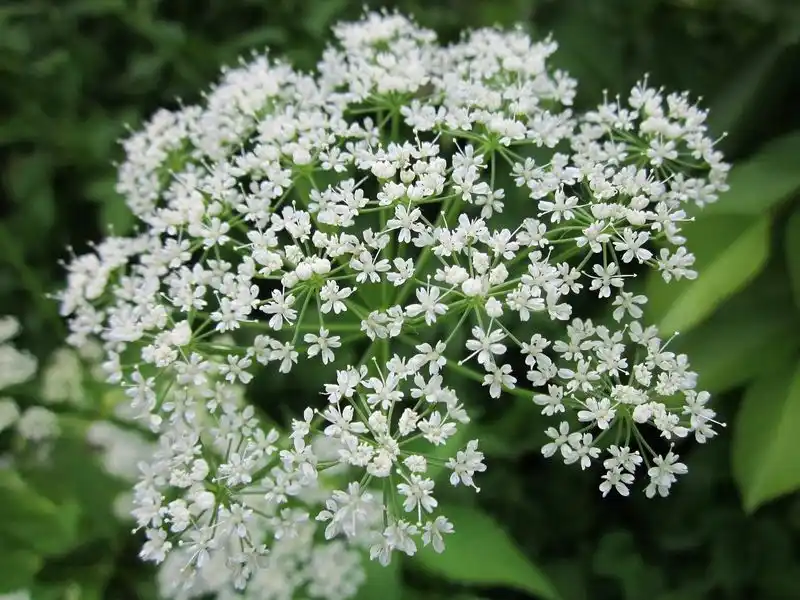
Bishop’s Weed, also known as Aegopodium podagraria, is an aggressive, ground-hugging plant ideal for shaded areas. Its variegated leaves bring a splash of brightness to dim corners.
Often used for erosion control, it’s effective in covering large expanses quickly. The white flowers add a subtle charm during blooming season.
Though vigorous, Bishop’s Weed is easy to manage. It provides a lush, green carpet with minimal care, perfect for gardeners seeking quick coverage and visual appeal in shaded spots.
Lamium (Lamium maculatum)
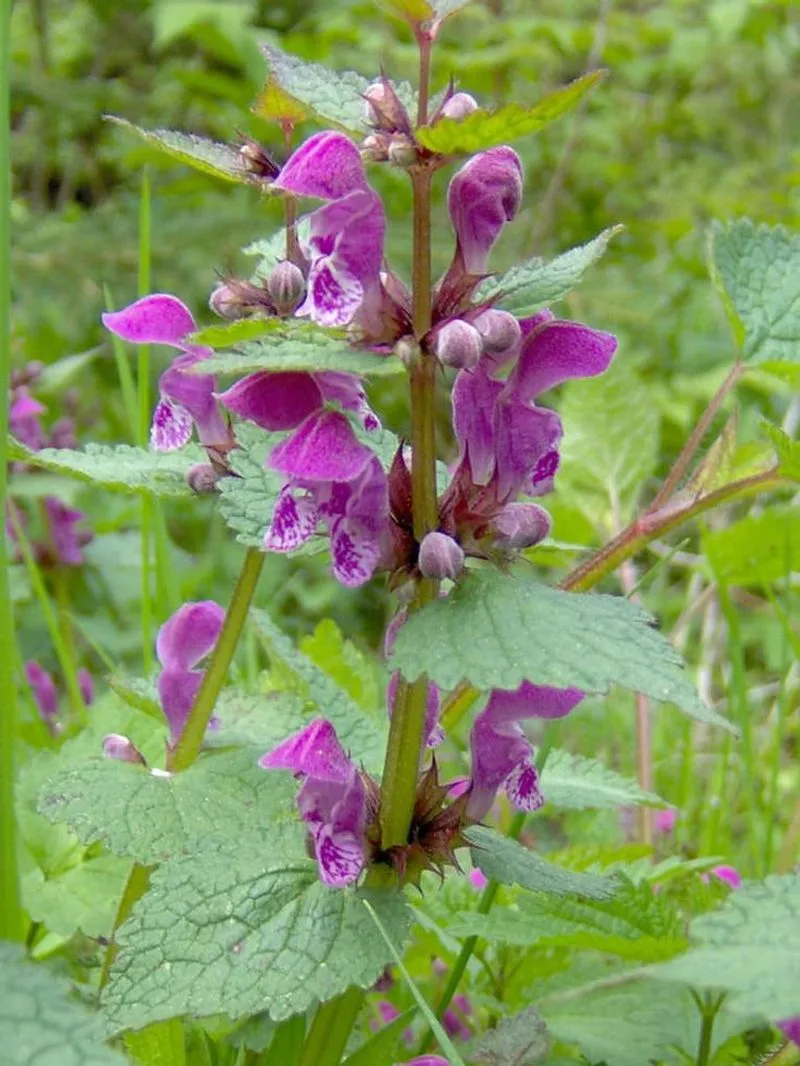
Lamium, or Dead Nettle, stands out with its silver-patterned leaves and colorful blooms. This shade-loving plant brings brightness and texture to garden beds.
With pink, white, or purple flowers, Lamium offers diverse aesthetic options. Its sprawling nature makes it perfect for ground cover or cascading over walls.
Native to Europe and Asia, Lamium is hardy and resilient. Its ability to thrive in shade and poor soil conditions makes it a practical choice for gardeners looking to brighten darker areas with minimal effort.
Wintercreeper (Euonymus fortunei)
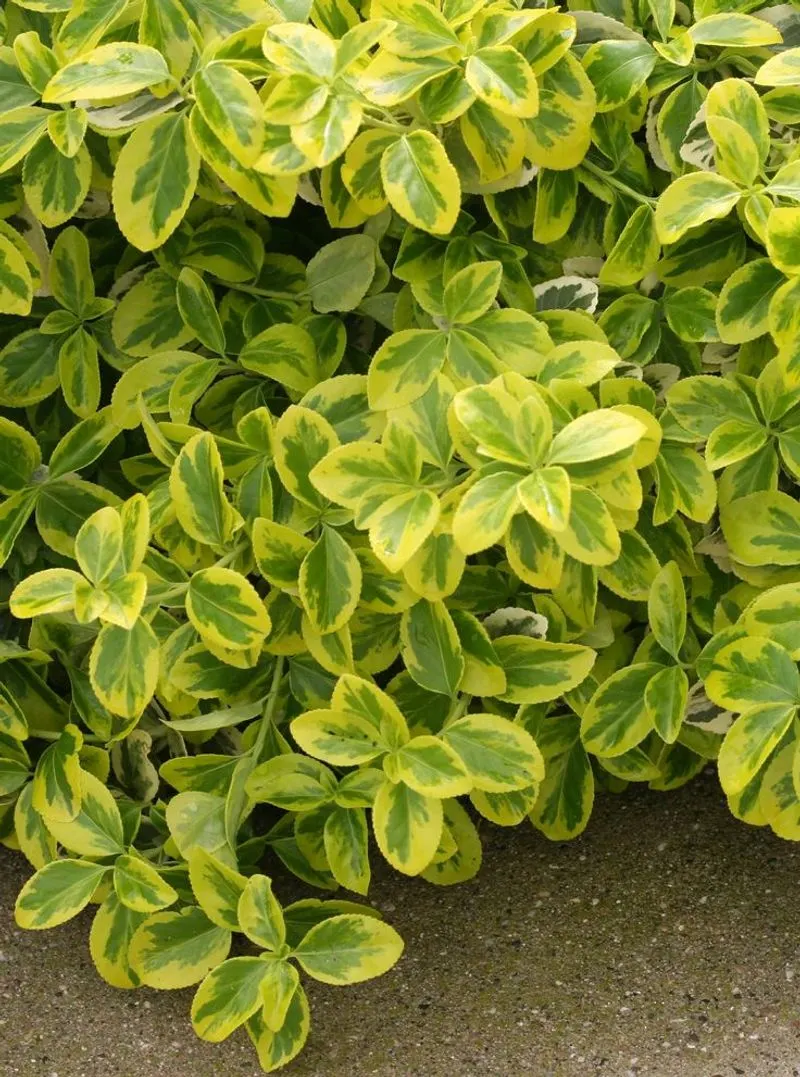
Wintercreeper, known scientifically as Euonymus fortunei, is a versatile evergreen ground cover. Its variegated leaves provide year-round interest in shaded gardens.
Used widely for erosion control, it is especially effective on slopes and shaded walls. Its ability to climb adds an elegant touch to vertical surfaces.
Originating from East Asia, Wintercreeper is admired for its adaptability and durability. It is a reliable choice for those needing an attractive yet hardy solution to cover ground or embellish vertical garden spaces.
Bugle Lily (Galax urceolata)
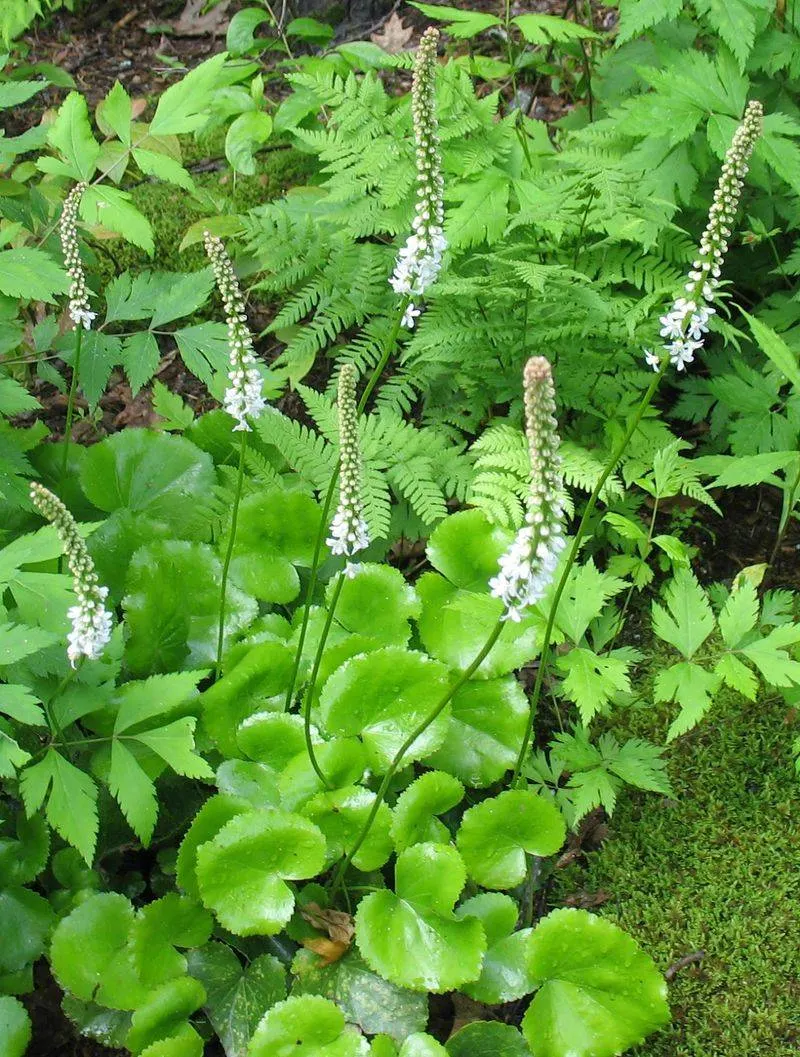
The Bugle Lily, scientifically known as Galax urceolata, enchants with its heart-shaped leaves and starry white flowers. Thriving in shaded woodland gardens, it offers understated elegance.
Its foliage turns a striking bronze in autumn, adding seasonal interest. Known for its delicate appearance, it nevertheless stands resilient against the elements.
Native to the southeastern United States, Bugle Lily is valued for its unique aesthetic. Its charm and adaptability make it a distinctive choice for those seeking to enhance shaded garden spaces with subtle beauty.
Creeping Jenny (Lysimachia nummularia)
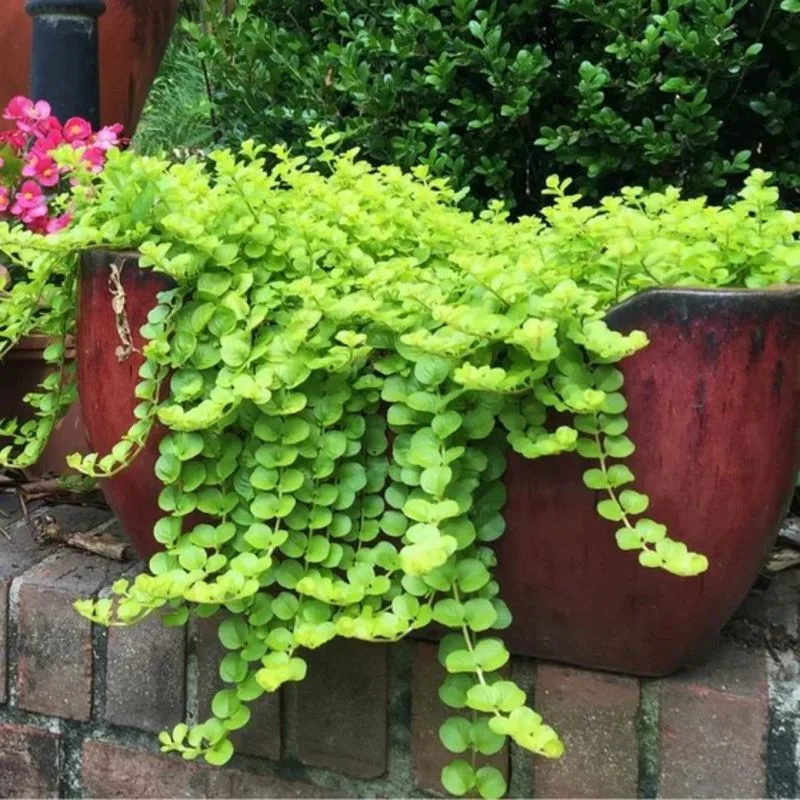
Creeping Jenny, or Lysimachia nummularia, is famous for its bright green leaves that cascade over garden features. This ground cover thrives in shaded areas, creating a lush tapestry.
Its leaves turn a vivid yellow in the fall, offering seasonal charm. A fast spreader, it quickly fills spaces with vibrant greenery.
Native to Europe, Creeping Jenny is a favorite for hanging baskets and shaded borders. Its low-maintenance nature and cascading growth make it a versatile addition to any garden setting.
Foamflower (Tiarella cordifolia)
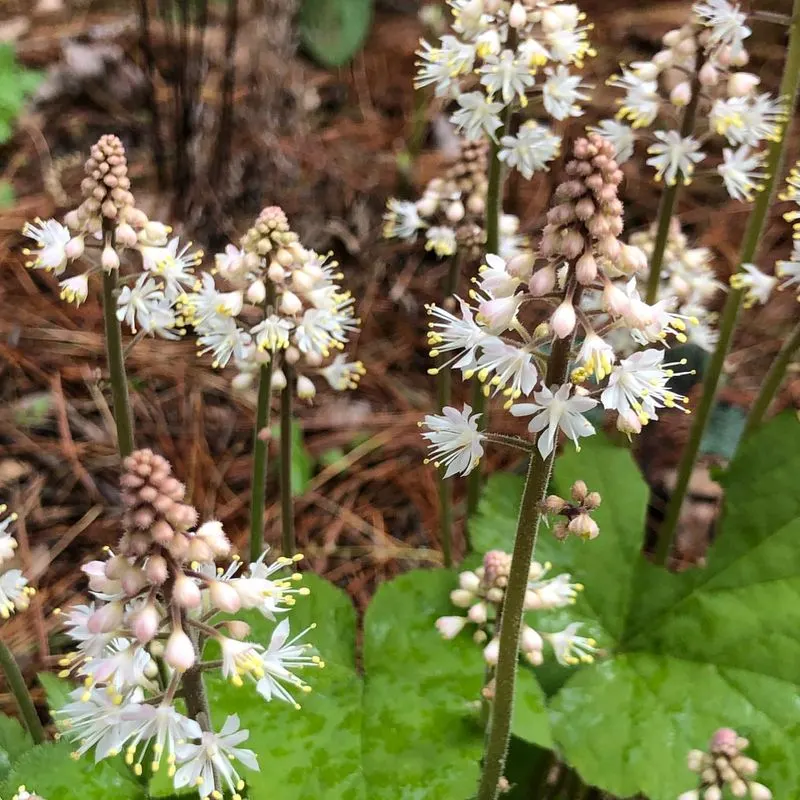
Foamflower, or Tiarella cordifolia, enchants with its frothy white blooms. Its lobed leaves add texture, thriving in the tranquility of shaded gardens.
This perennial favorite creates a soft, woodland feel, ideal for borders and paths. Its ability to spread gently makes it a staple for underplanting.
Native to North America, Foamflower is cherished for its ornamental and ecological benefits. Its understated beauty and ease of growth make it a beloved choice for gardeners seeking a naturalistic aesthetic in shaded areas.
Vinca Minor (Periwinkle)
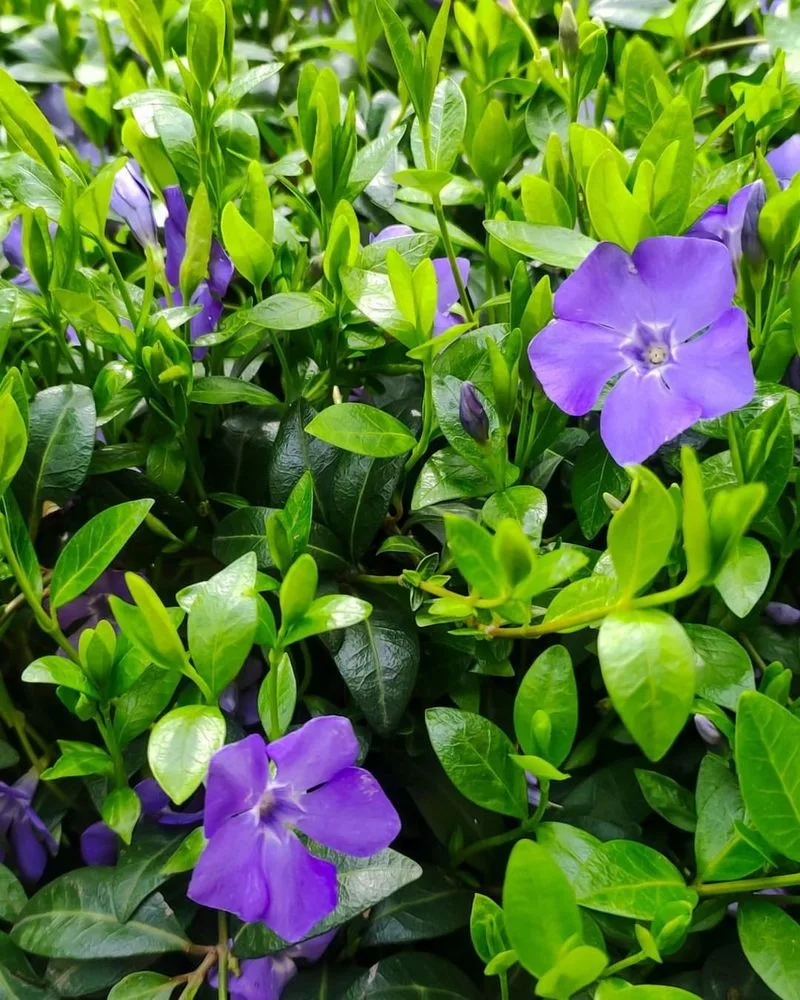
Vinca Minor, commonly known as Periwinkle, captivates with its vivid violet flowers. A beloved choice for shaded gardens, it offers a lush green carpet year-round.
This hardy ground cover is prized for its ability to suppress weeds effectively. Its trailing habit allows it to fill spaces quickly, adding color and life to dim corners.
Native to Europe, Vinca Minor is a classic pick for gardeners seeking reliable, low-maintenance beauty. Its floral displays and evergreen nature make it a versatile and enduring choice for shaded landscapes.
Mondo Grass (Ophiopogon japonicus)
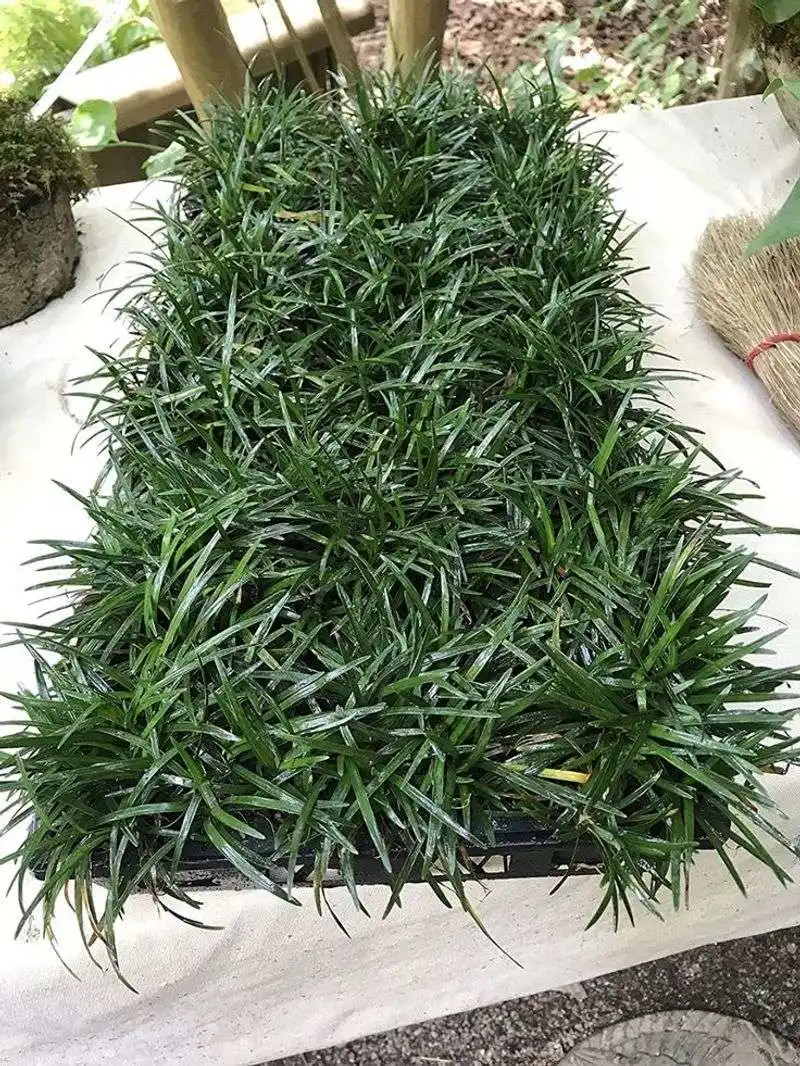
Mondo Grass, or Ophiopogon japonicus, is cherished for its sleek, dark green leaves. Forming a dense mat, it provides an elegant ground cover for shaded gardens.
Known for its low-growing habit, Mondo Grass is perfect for borders and paths. Its resilience to foot traffic makes it practical and decorative.
Native to Japan, this plant is valued for its adaptability and year-round appeal. Its compact form and ease of care make it a go-to choice for those wanting a neat and tidy appearance in shaded areas.
Golden Creeping Jenny (Lysimachia nummularia ‘Aurea’)
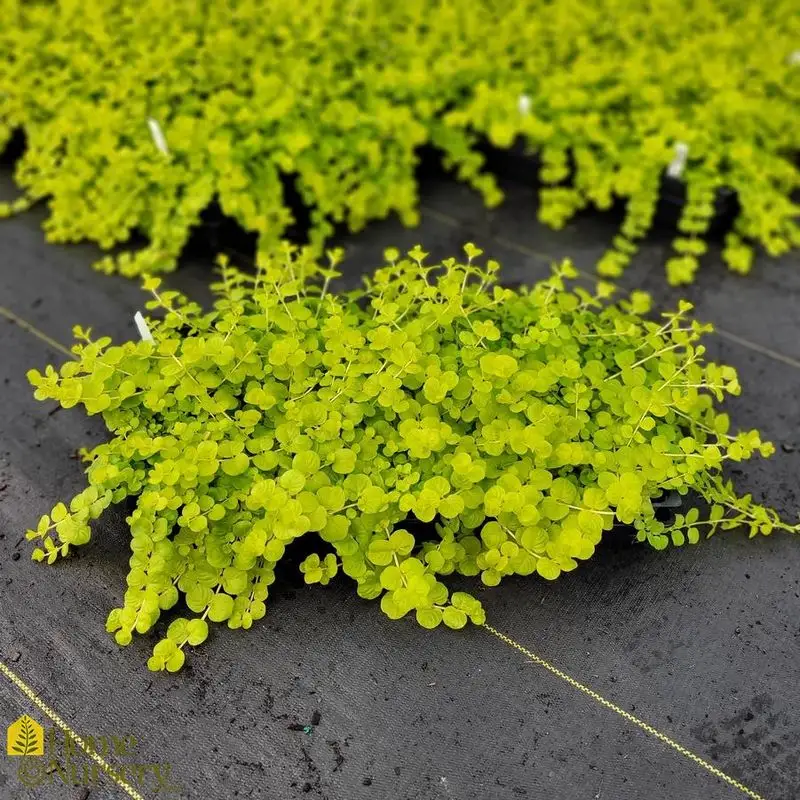
Golden Creeping Jenny, a variant of Lysimachia nummularia, dazzles with its bright golden leaves. Preferring sunlight, it brings a radiant glow to garden landscapes.
Ideal for sunny borders, it cascades gracefully, adding color and texture. Its rapid growth ensures quick coverage, perfect for filling gaps.
This European native is loved for its vibrant hue and adaptability. Its sunny disposition and ease of care make it a popular choice for gardeners looking to add warmth and brightness to their outdoor spaces.
Sedum (Sedum spp.)
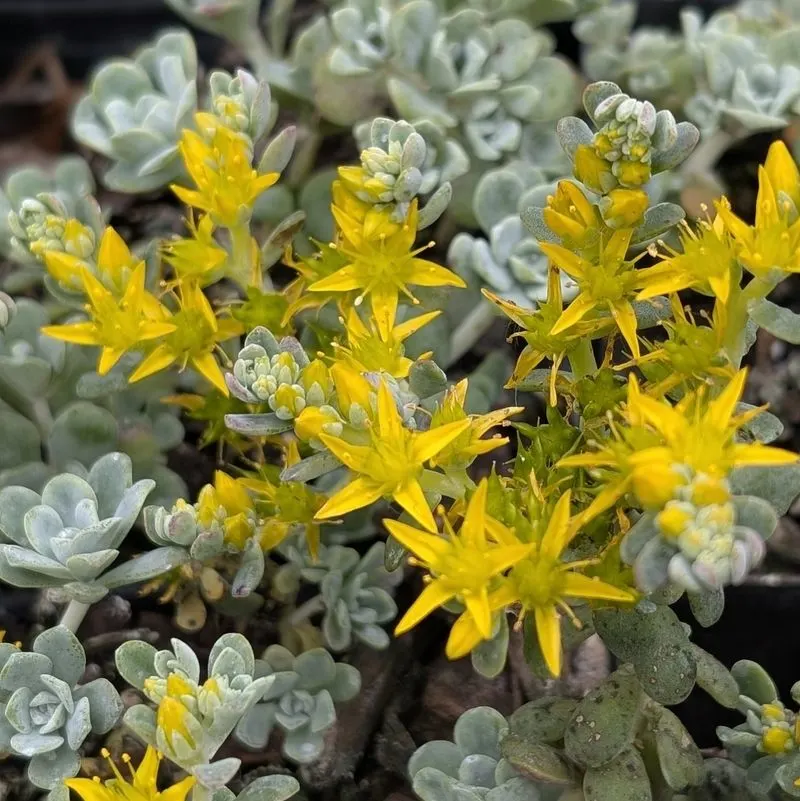
Sedum, known for its succulent leaves, thrives under the sun’s embrace. Its fleshy foliage comes in various hues, offering a stunning array of color.
Perfect for rock gardens and sunny borders, Sedum’s drought tolerance makes it resilient and low-maintenance. Clusters of star-shaped flowers add extra appeal.
Native to many regions worldwide, Sedum is a favorite for its adaptability and striking appearance. Its ability to flourish in sunny spots with minimal water makes it an ideal choice for those seeking both beauty and practicality.
Creeping Thyme (Thymus serpyllum)
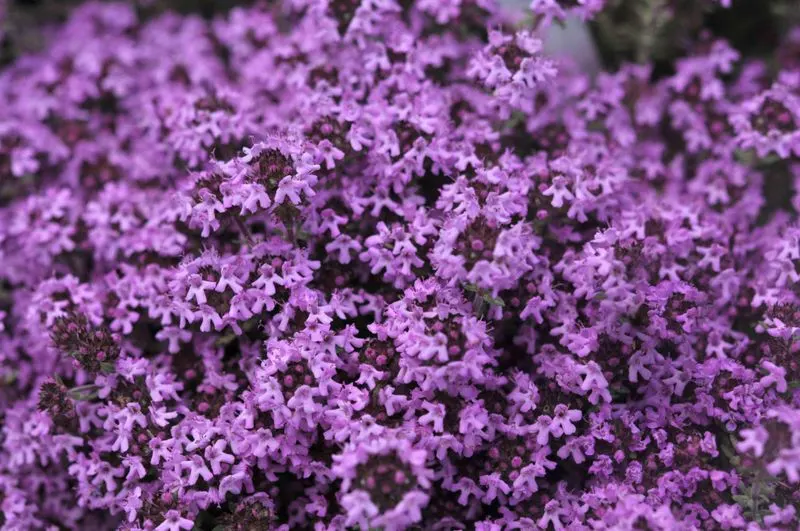
Creeping Thyme, or Thymus serpyllum, captivates with its aromatic foliage and tiny purple flowers. A sun lover, it adds fragrance and color to any garden.
Ideal for sunny paths and rock gardens, its low-growing nature makes it a perfect ground cover. Its resilience and charm are undeniable.
Originating from Europe, Creeping Thyme is cherished not only for its beauty but also for its culinary uses. Its fragrance and ease of care make it a delightful addition to gardens seeking both visual and sensory appeal.
Ice Plant (Delosperma cooperi)

The Ice Plant, or Delosperma cooperi, stuns with vibrant magenta blooms. Its fleshy, succulent leaves thrive in bright sunlight, adding a splash of color to dry gardens.
Ideal for sunny slopes and rockeries, it exhibits excellent drought resistance. Its fast growth and low maintenance needs appeal to many gardeners.
Native to South Africa, the Ice Plant’s ability to carpet sunlit areas with vivid flowers is unmatched. Its resilience and striking appearance make it a standout choice for enhancing sunny landscapes.
Santolina (Santolina chamaecyparissus)
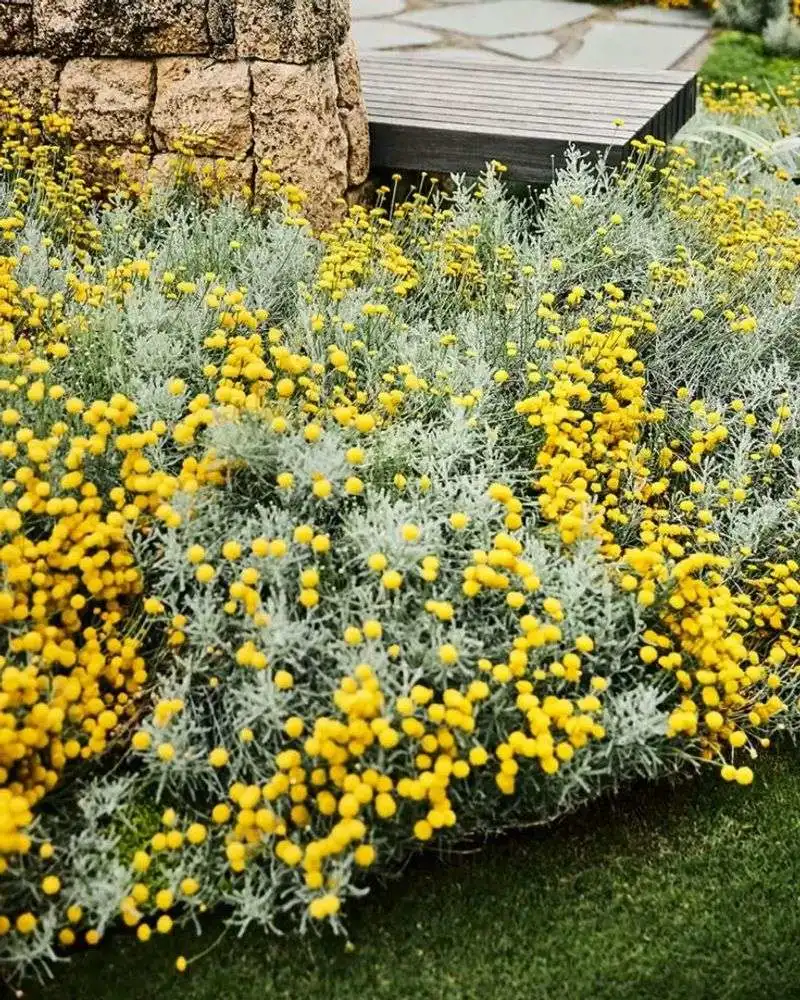
Santolina, or Cotton Lavender, enchants with its silvery foliage and yellow button flowers. Preferring sunlit, well-drained areas, it adds Mediterranean charm.
Perfect for sunny borders, its aromatic leaves provide both texture and fragrance. This hardy plant is drought-tolerant, requiring minimal care.
Native to the Mediterranean, Santolina is valued for its decorative and practical uses. Its unique appearance and scent make it a favored choice for gardeners aiming to create a sunny, fragrant landscape with minimal upkeep.
Sedge (Carex spp.)
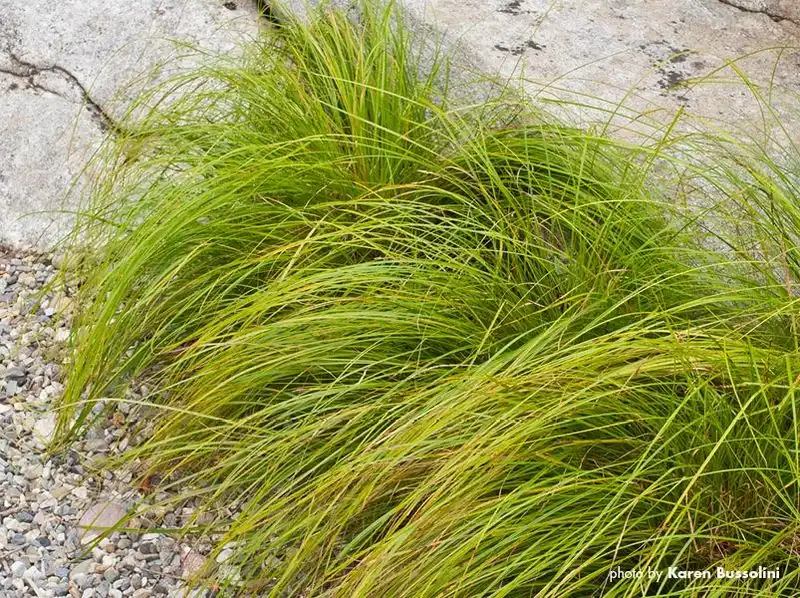
Sedge, belonging to the Carex genus, boasts fine, arching leaves that dance in the wind. Thriving in sunny, wetland areas, it adds grace and movement to any setting.
Its adaptability to various conditions makes it a versatile choice for gardens and landscapes. Whether used as a border or centerpiece, its ornamental value is undeniable.
With species worldwide, Sedge is appreciated for both its beauty and ecological benefits. Its ability to enhance sunny, moist landscapes with elegance makes it a prized addition to diverse garden styles.

